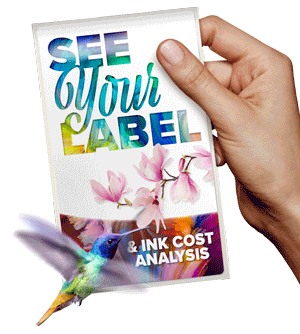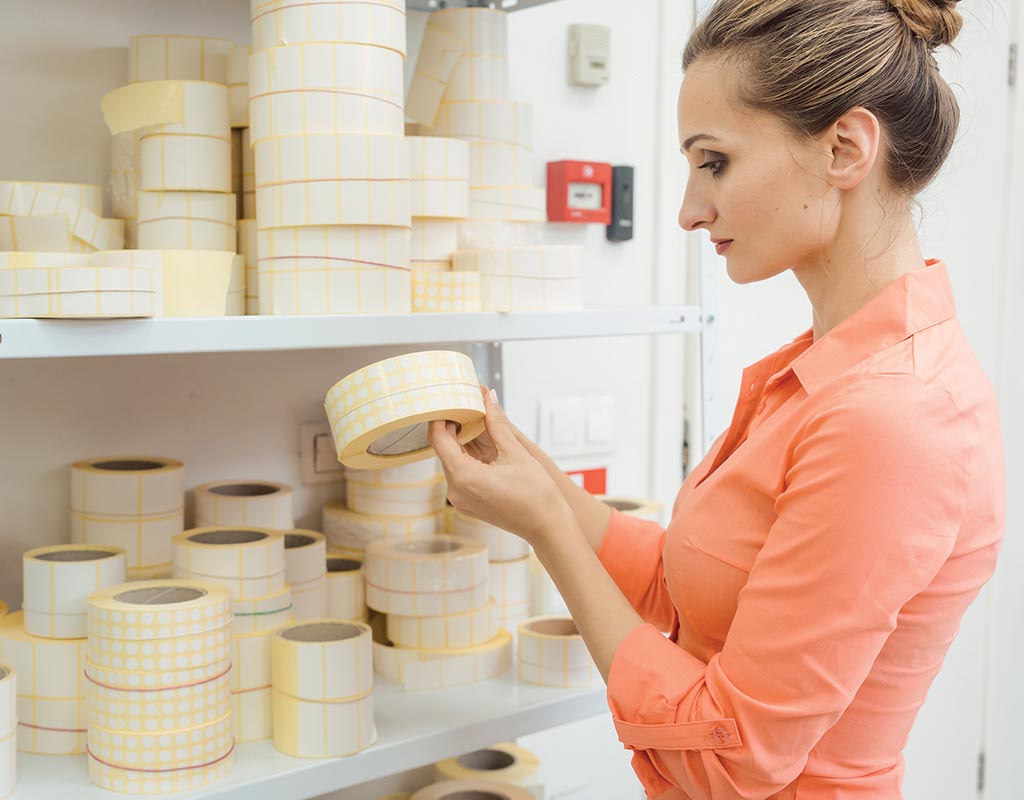When it comes to creating a winning product, it’s not just about the product itself but also the packaging. The label material you choose is often just as important as the label printer itself. With so many options to choose from, each with their own unique characteristics, it can be difficult to decide which material is the best fit for your product. In this post, we will take a closer look at the four most commonly used materials for inkjet label printing and provide tips on how to select the one that will give your product the perfect finishing touch.
It’s important to note that when talking about label materials, we are specifically referring to the facestock part of the label material. Adhesive and backing/liner are separate components that also play a role in the overall performance and appearance of the label.
The Four Main Materials for Inkjet Label Printing
Glossy Paper
Glossy paper is a popular choice for inkjet label printing because it is naturally ink receptive and provides a glossy finish. It is also an economical and often better environmental choice compared to synthetic materials. Glossy paper usually provides the most color vibrancy, so if you are looking for vibrant print colors, this may be the best choice for you.
Glossy BOPP
BOPP, or biaxially oriented polypropylene, is a synthetic material that is commonly used for inkjet label printing. It is a better and cheaper alternative to vinyl for product labels and provides a glossy finish. While glossy materials are known for their vibrant print colors, it’s important to consider the specific needs of your product and brand when selecting the right material.
Matte Paper
Matte paper is another popular choice for inkjet label printing. It has a matte finish, which provides a more subtle and professional look compared to glossy paper. Matte materials will typically have less vibrant print colors compared to glossy materials.
Matte BOPP
Similar to glossy BOPP, matte BOPP is a synthetic material that is commonly used for inkjet label printing. It provides a matte finish, which can be a more subtle and professional choice for certain products. Matte BOPP is also typically the choice for durable chemical applications, as it is resistant to abrasions and chemicals.
Specialty Inkjet Materials
In addition to these four main materials, there are also specialty materials available for inkjet label printing, such as wine stocks, foils, holographic, recycled and eco-conscious materials, and durable stocks like Kimdura. It’s important to always test the material to make sure it will look and perform as expected for your specific application.
Lamination
Lamination is another option that can be added to the label material to provide additional protection and a different finish or feel. A gloss or matte laminate can change the look of the label material, for example, a glossy BOPP print with a matte lamination can look very high-end.
Choosing the Right Material for Your Product
At Afinia Label, we carry these four main materials for both continuous and die-cut applications. Check out store.afinialabel.com for pricing and options. No matter which material you choose, it’s important to consider the specific needs and requirements of your product and brand when selecting the right material for your inkjet label printing project.
Choosing the right inkjet label printing material is essential to the overall look and feel of your product. Be sure to consider the specific needs and requirements of your product and brand when making your decision. With the right material, proper testing, and the addition of a laminate, you can be sure that your labels will look and perform as expected.














